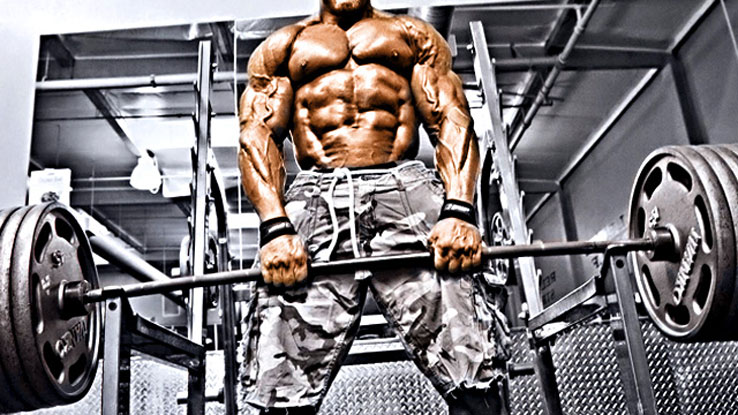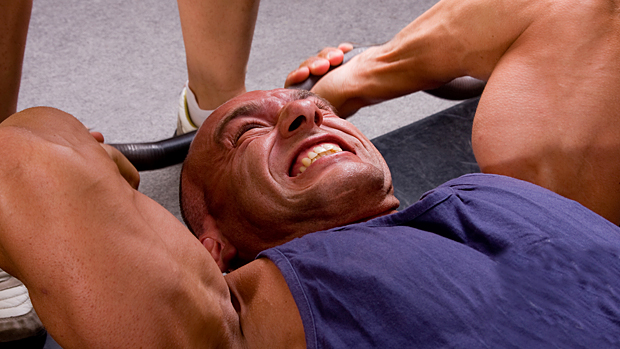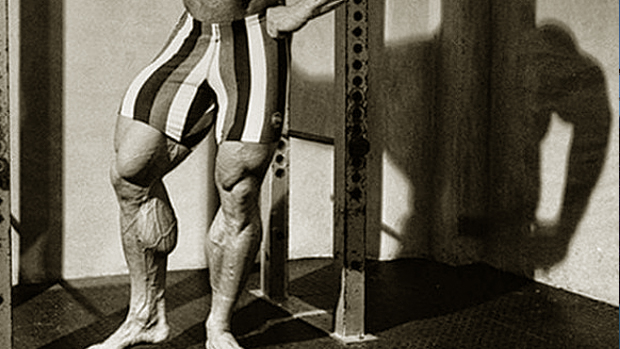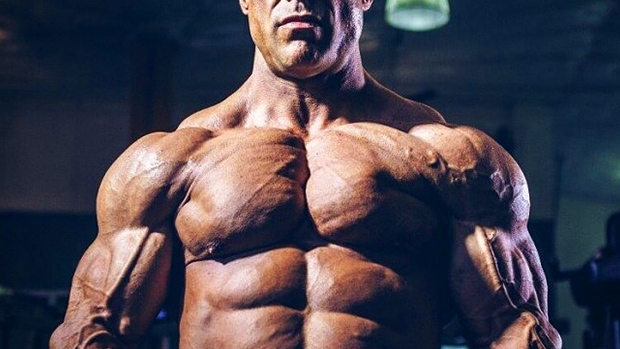Fix Your Deadlift
Everybody deadlifts, but not everybody deadlifts well. For every guy pulling 500 pounds with a flat back and synced-up knee/hip extension, there are 100 other guys missing 400 or throwing out their backs due to poor technique.
By improving your deadlift mechanics, you'll not only be able to lift more weight, you'll be able to do it without risking injury. Here are five common problems deadlifters run into and how to fix them.
- Cause: Hamstring tightness, back weakness, poor proprioception
- Solution: Romanian deadlifts to deficit
- Sets/Reps: 4-5 sets of 4-6 reps with 40-60% of deadlift 1RM
To deadlift properly, the first thing you need to learn is the proper start position. Typically we look for four things:
- Hip-width stance
- Vertical shins
- Bar over the middle of the foot
- Flat lower back
Many guys have trouble getting into position because of immobility, weakness, or a general lack of body awareness. An easy way to correct this problem, regardless of the reason, is to reverse-engineer a good starting position by doing Romanian deadlifts (RDLs).
RDLs allow us to work backwards with good form by starting at the top of the deadlift motion. By doing them to a deficit, we develop mobility and stability beyond deadlift depth, which will make it easier to get into proper positioning when deadlifting from the floor.
While holding a barbell, step up onto a box or step and assume a hip-width stance. Keeping your back flat, bend forward at the waist while slightly bending the knees. Maintain a vertical shin angle and let the bar travel as far down your shins as possible, then pause for 2 seconds at the bottom before lifting the weight.
While paused, pull your shoulders down and back and "show your chest to the wall." Try to go slightly lower every day until you're able to maintain good form with the bar below deadlift depth.
- Cause: Lack of starting strength and/or low rate of force development
- Solution: Speed deadlift from deficit
- Sets/Reps: 6 sets of 3 reps at 50% of deadlift 1RM
Speed deadlifts are a favorite for improving bar speed off the floor and developing power. Learning to apply a lot of force to the ground in a short amount of time will not only help you get the bar moving faster, it will make it less likely that you'll get stuck halfway up.
By starting the speed deadlifts from a deficit, we're putting our muscles in a less biomechanically advantageous position, which will help build strength and power through the entire range of motion. Once you're able to accelerate the bar effectively from a deficit, it becomes much easier to do so from the floor when your muscles are in a more advantageous position.
For these, stand on a step or bumper plates that give you about 2-3 inches of lift off the floor. Any more than that and you won't be able to get into proper starting position without smashing the tops of your feet with the bar. Taking your shoes off also helps give the bar room over the middle of your foot.
Move the weight fast, and focus on maintaining bar speed throughout the lift.
- Cause: Weak spinal erectors
- Solution: Good mornings
- Sets/Reps: 4-5 sets of 4-6 reps
Deadlifting with good technique requires a strong back capable of maintaining stiffness when breaking the bar off the floor. The best way to target the spinal erectors for improved deadlift technique is to perform good mornings, which require the back muscles to contract isometrically while bending at the waist.
To build up the spinal erectors, pause for 2 seconds at the bottom of the good morning and "show your chest to the wall" while keeping your hips from dropping, similar to the paused RDLs from the previous example.
After the two-second pause, keep your low back flat while driving your heels into the ground and returning to the starting position. This will help you get the feel of how to set your back properly before initiating a deadlift from the floor.
- Cause: Glute weakness, quad dominance
- Solution: Barbell hip thrusts
- Sets/Reps: 4-5 sets of 4-6 reps
If you have trouble keeping your weight back when initiating the deadlift, the cause is likely a lack of glute and hamstring strength. When your posterior chain strength isn't up to par, you won't be able to extend your hips and knees simultaneously, and instead will raise your hips while transferring weight towards the front of your feet.
When this happens, the bar will also drift away from your shins.
If you feel your weight moving towards your toes as you break the bar off the ground, perform barbell hip thrusts to build strength in those muscles. Stronger glutes will enable you to sit back into the lift instead of lurching forward and will allow you to lift more weight as a result.
Use back-supported hip thrusts with your back against a weight bench to increase the amount of hip flexion at the starting point of the lift. Starting from a less biomechanically advantageous position will help develop strength in a hip-flexed position, which will carry over well to the starting position of the deadlift.
- Cause: Position-specific weakness
- Solution: Rack pulls
- Sets/Reps: 4-5 sets of 3-5 reps with 80-90% of your deadlift 1RM
Sticking points are points during a lift where the barbell stops moving, resulting in a miss. When deadlifting, common sticking point areas are the mid-shin, knee, and low thigh.
Regardless of where your sticking point is, you can develop the ability to push through it by strengthening your muscles through your zone of weakness. Rack pulls allow us to set the bar at the point where we're the weakest to specifically target that zone.
To break through sticking points, set up a barbell on pins or boxes about 3 inches below the spot where your deadlift usually stalls.
When you hit a sticking point, the bar doesn't just suddenly stop moving – it decelerates leading up the sticking point and then stops. Starting below your typical sticking point rather than at the exact sticking point will help develop bar speed through the spot where your lift grinds to a halt.
Deadlift the bar from the pins and lock out the lift at the top, but instead of lowering the bar back to the pins and starting from a dead stop again, simply touch the pins or box and then explode right back up again.
Starting from a dead standstill doesn't make much sense if we're trying to get through a sticking point since the bar is already moving once we hit that point during a normal deadlift. By not coming to a complete stop, we're able to focus on improving rate of force development and bar speed through the sticking point rather than starting strength, which will keep the bar from decelerating in the "weak zone."
Have a trained eye evaluate your technique and identify where exactly you're falling short. Then, follow the appropriate path to correct the deficiency.
It's not complicated – just effective. Like most things in the iron world.




